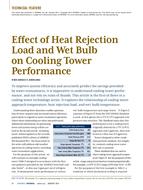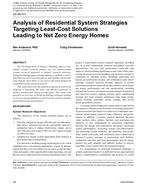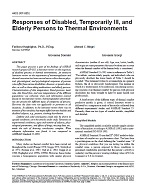Robust statistical regression models of commercial and industrial building energy use can be created as a function of outdoor air temperature, occupancy, production and/or other independent variables. These regression models have many uses, including forecasting energy use, benchmarking, identifying savings opportunities, and measuring energy savings from a normalized baseline. When evaluating facilities with this method, monthly utility bills are commonly used as source data because of their widespread availability and accuracy. Monthly energy data, however, provides less resolution than higher frequency daily or even hourly data.
This paper examines whether regression models of monthly energy use can be used to predict daily energy use, and by extension whether the time scale of the data affects efforts to understand a building’s fundamental energy performance. To do so, the paper compares daily-energy and monthly-energy regression models for four commercial and industrial facilities. The model coefficients of the daily- and monthly-energy regressions closely match each other for three of the four facilities, and thus can be used interchangeably. However, one of the facilities has different occupancy schedules on weekdays and weekends, and the monthly model cannot predict daily energy use in this case.
The generality of these case study results was investigated in this paper by comparing outdoor air based regression models of simulated daily and monthly energy use. The results indicate that the variation in energy use caused by variable solar radiation, outdoor air humidity, and heat loss to the ground is larger at the daily time scale than the monthly time scale. However, these drivers are sufficiently correlated with outdoor air temperature so that the overall predictive ability of outdoor air temperature based models is still quite good. In addition, the results in this paper indicate that although building energy use is driven by factors that change on the sub-hourly time scale, these effects are fairly evenly distributed over time; thus, models based on longer time scale data can accurately characterize a building’s energy use.
Citation: ASHRAE Transactions, 2010, vol. 116, pt. 2, Albuquerque, NM
Product Details
- Published:
- 2010
- Number of Pages:
- 13
- File Size:
- 1 file , 3.6 MB
- Product Code(s):
- D-AB-10-026


